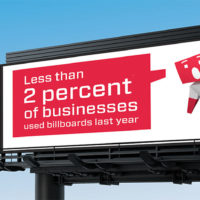
Written by Michelle Doss – Marketing Director at Modern Systems
Being a consultative advisor on PR is one of the best jobs in the world. But having a routine and process embedded into your daily life to make sure you can balance strategy with execution can be harder than it sounds. Here are some tips for making sure you always see the big picture.
Make time to think, not just do.
When you are the doer PR person, it’s difficult to remember to make time to think. But it is absolutely necessary. If all 8 hours of every day are filled with checking boxes, how will you ever make time to think? You have to build this into your daily routine, and you need to calendar it like you would any other meeting or deadline in order to ensure it actually happens. To get out of execution mode and into strategy mode, take short walks away from your desk throughout the day. Break to read a magazine article or even watch a music video on YouTube for a few minutes. Walk into an art museum on your lunch break and be inspired by unique creations.
Taking these mental breaks away from your daily tasks will help open your mind up to new things. It will also give you the mental break you need to always come back to any task and start with the why. Why are you even doing this task? What goal will it help the organization reach? What strategy does it support? How will you measure whether it will be successful or not? These questions will rise to the top of your brain if you implement thinking time into your day, every single day.
Let people see inside your mind.
I love working with people who let me see their wheels turn. It makes me feel special, to have an insight into how their mind operates. It also shows me how much they care about the work we do together, to give me the opportunity to have the inside track on their mental prowess.
I’ve talked about this one in other blogs, but it’s worth repeating. There is a tendency for PR folks, particularly those who work at agencies, to reserve their “strategic” skills for big meetings, and often times after the strategy is fully baked and tied up neatly in a bow. This is a major oversight. With any interaction with clients or executives, you should be demonstrating that you are a thinker as much as a doer. One way to instill discipline in yourself to carry out this goal is to find ways to insert strategic discourse into every single interaction you have with a client. If you work at an agency, you likely have a weekly status call with your client, where you run them through the tactics for the week. This is great! Getting stuff done is so important. Now, find a way to carve out just 5-10 minutes of that call to talk strategy, and you will delight your client beyond their wildest imagination.
You can do this by coming up with a proactive idea to discuss on the call, or just simply revisiting the why behind an existing tactic. If a media pitch isn’t gaining traction with reporters, come prepared to the status call to revisit the goal of the effort in the first place, in order to pivot to a new recommendation. Devoting just a small part of existing conversations to strategy will make people feel incredibly satisfied in working with you because they will see first-hand how you are equal parts doer and thinker.
Connect small dots.
Strategy to me is like breathing at this point. I have a maniacal focus on the end game prize, and I have a pressing need to know where all the work will lead me. Teaching strategy has proved to be very difficult for me. I don’t know how to explain what years of experience have taught me through trial and error. But what has worked well for some new PR folks on my team is to tell them to bite strategy off in small chunks. If strategy is all about choice, then choices can be broken down into a series of dots that get connected. I try and coach people to find ways to connect the small dots. It doesn’t have to be some grandiose thing.
For example, if your client has three announcements this month, a trade show, a rebrand and wants a ton of media coverage, why not connect some of these tasks into one larger campaign effort with a powerful theme to thread them all together? Sometimes strategy is just being able to collapse disparate things into one thing, with a common, measurable goal attached to it. Believe it or not, your clients will think you are brilliant when you connect these small dots for them.
Understand the concept of navel gazing, and your role in helping people overcome it.
It seems obvious, but as an outside PR specialist or agency consultant you are in a unique position. You don’t work in the same organization or sometimes even the same company as all of the other marketing folks. Think about how valuable this makes you, when it comes time to create messaging, positioning and strategy. While everyone else took a big swig of the company Kool-aide you were left untouched. Which means you have an outside in viewpoint and perspective. Always think of this fact when you stop yourself from advising your executive or client. You can look at things objectively. You can spot jargon a mile away. You know if messages won’t resonate with the average viewer. This makes you undeniably unique and valuable. Listen to how executives talk about products and the company, and provide constant feedback to them when it starts to seem like they are just talking to themselves and not the outside world.
Know that it won’t happen overnight.
If you are still new in your career, know that being strategic takes time. You should self- study to get more insights under your belt. Also, one of the best ways to get trained is to spend a lot of time with your bosses and your clients. See how those folks at the VP and above level talk about strategy, how they think on their feet, and how they problem solve.
You also have to be prepared to fail. Yes, fail. If your strategy is the wrong one, learn from what went wrong and apply that knowledge next time. The fact that you made a strategic decision at all is still achievement-worthy. Lots of folks go their whole careers without ever making a strategic decision. Having firsthand experience into a not-so-great strategy will give you greater confidence for the next go round because you will have real experience to draw on.
More than anything, be a learner. Listen and ask questions. Asking questions signals a high level of aptitude for strategic thinking. The process of trying to learn more, and using those answers to bring up ideas will get you closer and closer to being seen as a strategic advisor. Now, good luck!




